Margot Harrington is a visual artist working in graphic design, print media and painting. She is the owner and founder of Pitch Design Union. Her work explores the contemporary landscape of Chicago, as well as the Internet, intersectional feminism, gender identity, Japanese culture, Scandinavian design, Chinese medicine, meditation, and art in support of oppressed peoples. Her work aims to discover and uplift new role models.
Ali Tomek: To start, from looking at your website, your work seems to cross boundaries among fields like graphic design, illustration, and printmaking. How would you describe your work?
Margot Harrington: I mean, that’s a pretty great description. My degree is in fine art with an emphasis in graphic design. However, I do a little bit of everything. I have a lot of different interests. I’m more of a generalist versus someone who has a specific niche or very focused way of working. That’s how I’ve always worked, blurring lines across a broad range of mediums, which reflects my personality and keeps me from feeling too boxed-in.
AT: How do you find inspiration?
MH: The best answer is always, everywhere. I interpret this question as live a rich life. Say yes to things, go to concerts, go to shows. Sometimes I let myself work to the point of frustration before I step away.
I think a lot about this in terms of appropriation of cultures. For example, my dad and I, we used to email each other haikus once a week or so. Haiku led to Wabi-sabi, Japanese printmaking, and how Japanese people approach creativity in general. Obviously, I’m not Japanese, I am a white person, but I’m very aware of the privilege to learn about another culture and how important it is to be respectful of those historical practices.
Inspiration and appropriation are very closely related terms. Appropriation is rampant in the art world. That’s something I spend a lot of time thinking about for myself in terms of how to be respectful of other cultures and what is really meaningful to me: am I just borrowing for the sake of borrowing? I try to be super honest about it and approach it the best way I can.
AT: So what is it about Japan, specifically, that is so inspiring?
MH: Well, it’s a way of exploring my relationship with my dad. He passed away two years ago and studying Japanese culture helps me remember him. I will definitely say that he was appropriating Japanese culture in our home growing up, which I recognize now, but I learned about something different because of that. It planted a seed. I started to research all of these practices Japanese people have around making work creatively. There are terms for things that don’t exist in American culture that I think we could benefit from. Actually, there’s a few startups that have adopted some of these practices, with varying levels of success. One is the concept of Kanban, which is basically shorthand for defining your bandwidth to be able to complete or create a task. For example, do you have room in your Kanban for new work? It’s almost like efficiency is great to a point, but then you can become too efficient where you’re suffering or hurting yourself.
I also had a chance to visit Japan last year. I went there by myself for two weeks. In part, this trip was in honor of my dad, because he never went there himself, although he would have loved to. Also, I wanted to experience immersing myself in a place where I don’t know anyone or the language and where the culture is extremely different. You’re immediately labeled as an outsider.
AT: You mentioned printmaking earlier. How does your background in printmaking inform the rest of your work?
MH: The most printmaking experience that I have is in screenprinting, which is a similar approach to design in that you can collage a composition together and layer things. My work uses a lot of color, overlapping shapes, and abstract geometric forms, which I feel comes from a collage aesthetic.
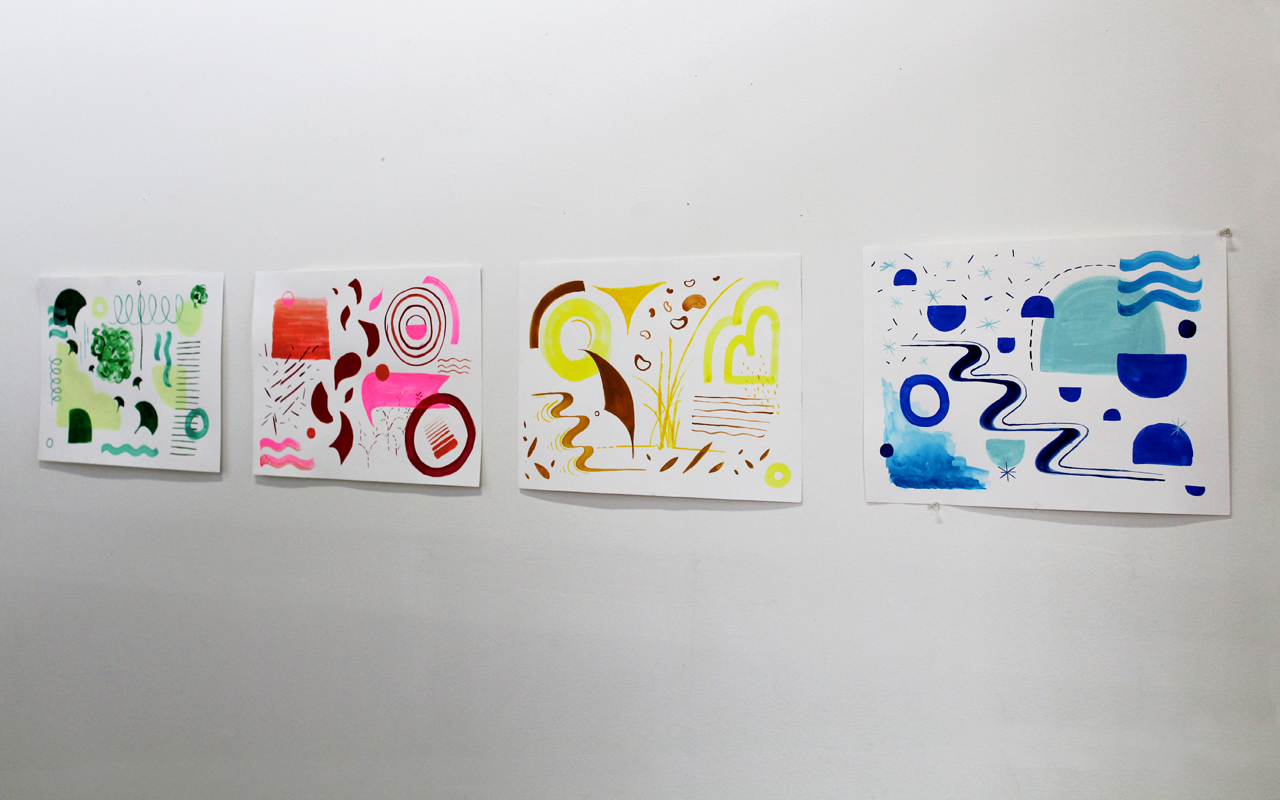
The other thing that I didn’t mention is that I also paint. It looks similar to my prints when I’m finished with it, but sometimes painting to me is more urgent in that it doesn’t require as much setup or advance planning. You can just sit down and something comes out, which I find very helpful if I’m unable to make it to the studio. I can still do something with my hands that’s not on the computer.
I also always just loved vintage type and objects. I think that is what brought me to printmaking originally. I wanted to modernize a really classic traditional practice and do something new and fresh and vibrant with it. Also, my grandpa was a letterpress printer, which I didn’t know until after I started printmaking. It skipped a generation, but it’s in my blood.
AT: As someone who is studying graphic design now, I’m curious how you balance digital and physical making. Lately, staring at a screen for too long makes me a little sick.
MH: Yeah, it’s like you live your life by the glowing box. Like a weird episode of Black Mirror or something. I will say that I don’t always have a balance there. It’s not like I can have a perfect percentage or a perfect hourly breakdown everyday of what task I’m doing or if it’s on my computer or not. It still takes me a lot of discipline to be able to do both.
What I have at home — that’s my primary workspace — is a room with my digital desk, and then a similar version of my studio set up here at Spudnik. If I really need to, I step away from my computer for 15 minutes or so and do something else to keep my brain fresh. I also incorporate some illustration into my design work, so I’ll draw something, scan it, work on it in the computer, draw on it some more, scan it again — it’s somewhat of a cyclical process.
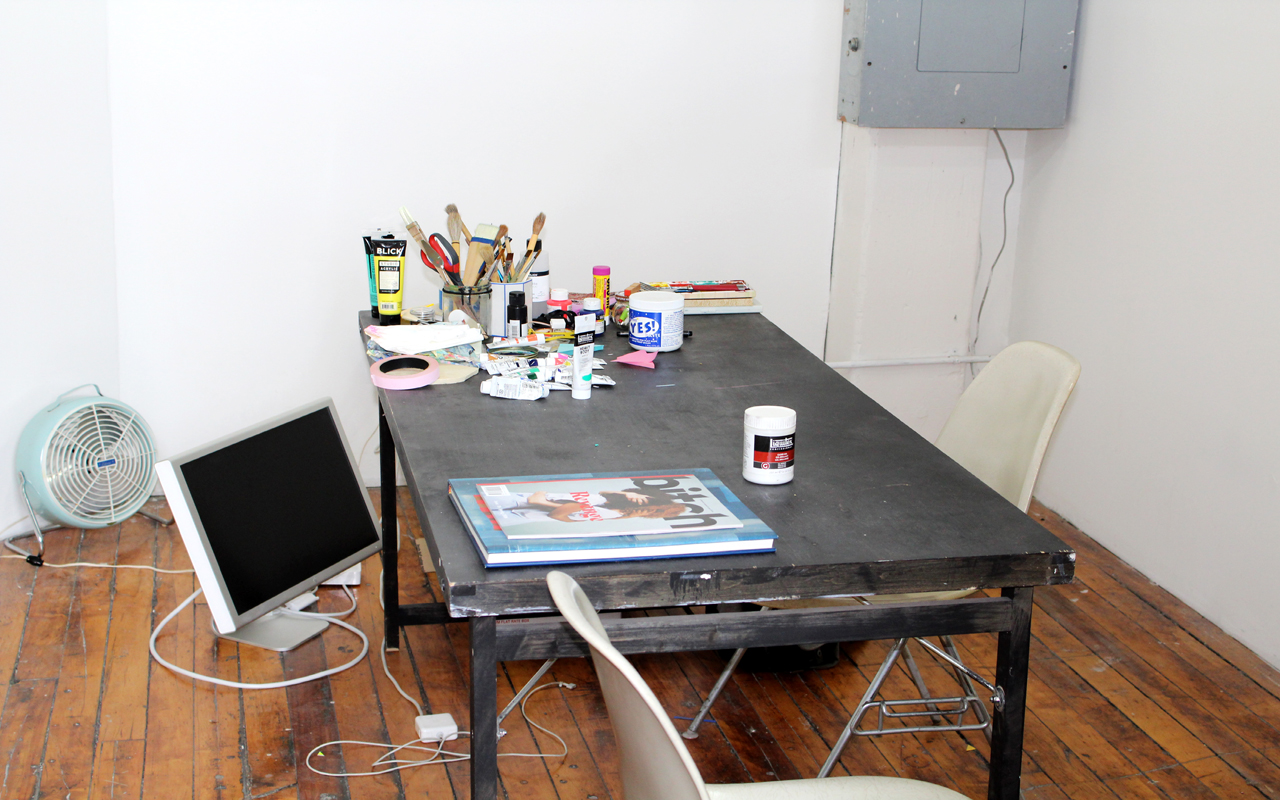
Harrington’s Spudnik studio.
And then here [Margot’s Spudnik studio], I really try to prioritize this space with my art, although as you can see I have another computer display on the floor. I take it off the desk most of the time because otherwise I just end up working on my computer. I try to visit my studio at least one full day a week and will come in more often if I’m working on a project. However, there are also some weeks where I’m just on a deadline and can’t do anything on the side.
Until I get paid as much to make paintings as I do for my design work or to build websites, they’ll be in conflict with each other, and I don’t know if that’s necessarily a bad thing. There’s always conversation about design and art and craft as these three opposing things, but I don’t think you really can’t have one without the other.
AT: Building off of that, I noticed a couple artist books on your website. I also make artist books and wondered how these fit into your practice? Additionally, how does writing and teaching inform your work?
MH: Through artists books, I can easily incorporate my painting, printing, and hand binding. It’s something I would love to do more of in the next year or two. I feel like I’ve fallen off that practice a little bit, but it’s super meaningful to me in that I also love publishing. Books were something I just fell in love with as a kid. I was one of those kids that always read, and my parents would tell me “Go, outside.”
One of my main clients and I also produce a quarterly magazine called Bitch. This, I think, scratches the same itch as producing artist books. I don’t know where this project will ultimately lead us to, but I like that it helps me feel like I’m connected to a literary community, and I get to produce a three-dimensional object that reads like a book that deals with social justice issues that are important to me.
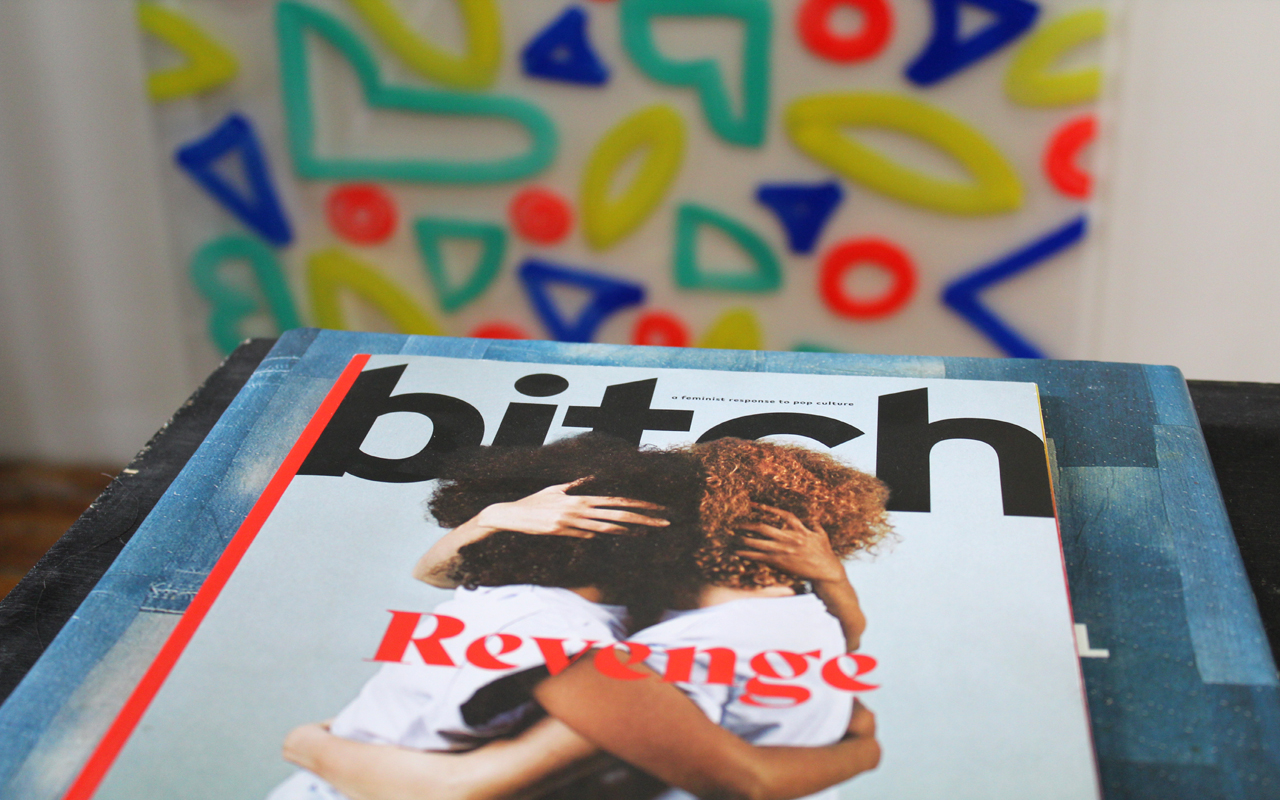
I think writing is another important component of bookbinding or printmaking or comics or zines. There’s a very strong connection between these things. Through an image, you can share or convey a feeling in a way that’s sort of universal, but because words are so specific, to really say something bold, you have to have a clear vision of what you’re trying to say. It’s like a main line to your brain. I have a lot of respect for writers that are able to be so vulnerable and share so much of themselves with the world.
Teaching is a way to give back. I think I have a non-traditional path as an artist and creative professional, which I like to share with students and hopefully they can take something away from my experience and apply it to their own life. Teaching also lends credibility to my work and to my practice.
AT: What do you think it means to be an artist in Chicago? Do you feel like you are part of a larger artist community?
MH: Yes and no. I love Chicago because there’s less ego involved with making work here, which I think is a pretty known thing about this city. People live here as artists because they just care about the work. They’re not trying to move to Berlin and be a famous, capital-A Artist (although Berlin is great, and if you need to be there, do you, boo). Chicago has a kind of blue-collar approach to visual work or working in service of something, which I really love and connect with a lot.
However, at the same time because the School of the Art Institute is such a big part of the artist community in Chicago and because I didn’t go there, I don’t feel like I belong to it. That can feel like a little bit of a barrier at times. Yet this doesn’t stop me from establishing meaningful connections with other artists, even those who are part of the SAIC community. It’s more just a perception thing.
AT: Your perspective on Chicago is really interesting because I just came back from New York. I was there for two weeks and wondered what it would be like to live in such a pressurized environment all the time. It was thrilling, but Chicago feels more approachable.
MH: I could have moved to New York and lived with my dad and stepmom. I could have figured it out, but it would have been a lot harder. I definitely made the right call in hindsight. You can take more risks here because the cost of living is much lower. That, to me, takes a lot of the pressure off. It’s possible I would live in New York now, but it would require a major job change or a residency or a commission.
AT: As I was preparing for this interview with you and reviewing the work on your website, I noticed your riso print The Certificate of Safe Space. It seems like some of your work focuses on social issues/concerns, which you also touched upon in regard to Bitch magazine Bitch. Is that an important theme in your work? Do you feel like art can help build a better world?
MH: Totally. The piece you referenced was done for a show where every artist was assigned a topic, and mine was sexual harassment in the workplace. This was a couple years before the Me Too movement. At that point in my career, I had already experienced what it felt like not to be respected in the workplace. I definitely felt a personal connection to it. The idea behind The Certificate of Safe Space is that in the same way that spaces have to put up their business license, this is something someone could put up in their workplace that would tell employees they’re actively involved with creating equitable, fair processes or systems that would allow people to be treated with respect in their workplace, fighting microaggressions, racism, gender issues — really anything.
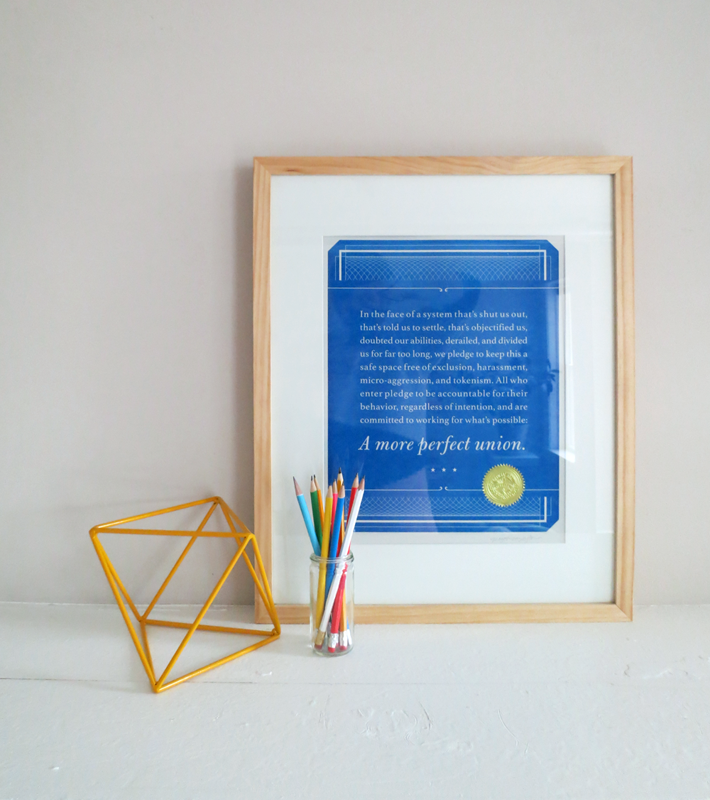
Harrington’s piece, The Certificate of Safe Space. Image courtesy of Margot Harrington.
The rest of my work is more abstract. You‘re allowed to project your own thoughts onto it. So when I’m projecting my own thoughts onto it, it’s always a mixture of what I would want to see in the future, but doesn’t yet exist.
A really concrete example of this is my painting, The Fifth Female President of Color. I knew the title of the piece before I had even started it. I created the painting in 2015 and during this time I wondered whether this was something that would happen in my lifetime. Because it’s an abstract painting, we don’t know who the person is, what they’re going to look like, or what the path is to get there. Despite this uncertainty, it’s a really happy, beautiful, and vibrant work. And while the results of the last election were not what I expected, I still believe that positive projection is really important in terms of manifesting what you want to see or be in the world.
AT: What are you currently working on, and where should people go to see your work?
MH: Today I’m working on some acrylic and acetate pieces I’m printing on slash painting on to use as photo shoot props. Also since the contract I have with Bitch is all year, we have one more issue left of the magazine that’s going come out in late fall.
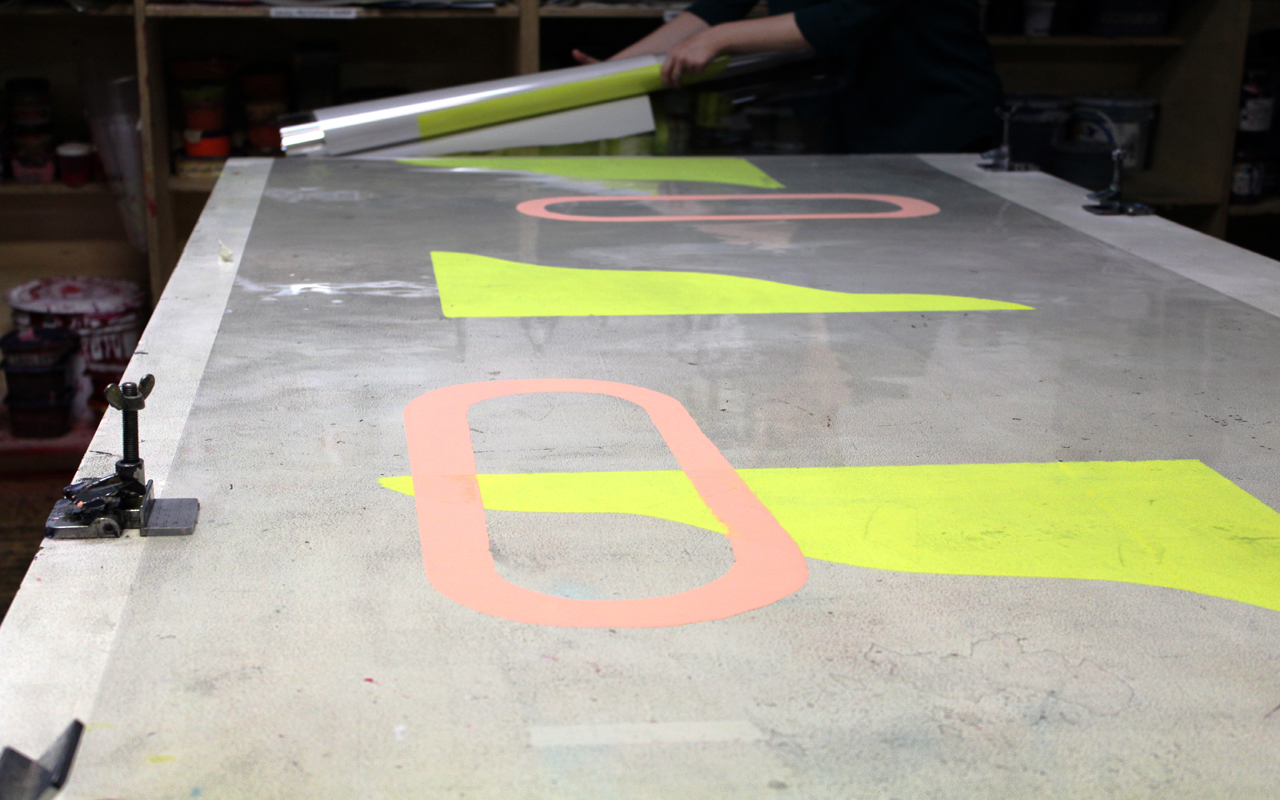
Beyond that I have a couple feelers out for a mural that I’m still working on finding a location for. I ended up doing a small crowdfunding fundraiser for it since this type of work can be expensive. I’m hoping to secure a space and wrap up the project before the year is out.
AT: Awesome. And then a fun question: what are you currently reading?
MH: The book I’m reading right now is by Samin Nosrat. Salt Fat Acid Heat is the title. It is a cookbook, but not in traditional format. It teaches you how to cook and then sets up the variable types of dressings or flavor profiles to build your own recipes. The recipes are open-ended. Before bed, I read a couple pages. Usually I’m reading all sorts of things, but that’s the only one right now.
If you want to find out more about Margot and her work you can visit her website or follow margotharrington on Instagram.
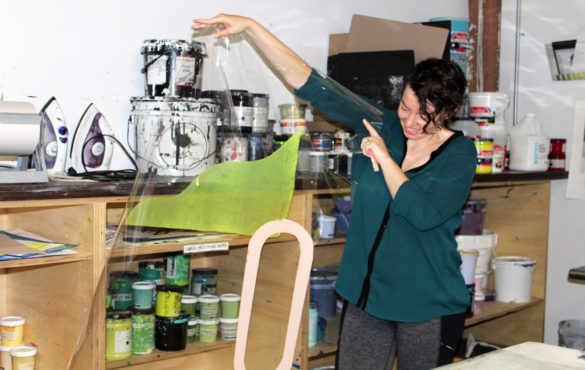
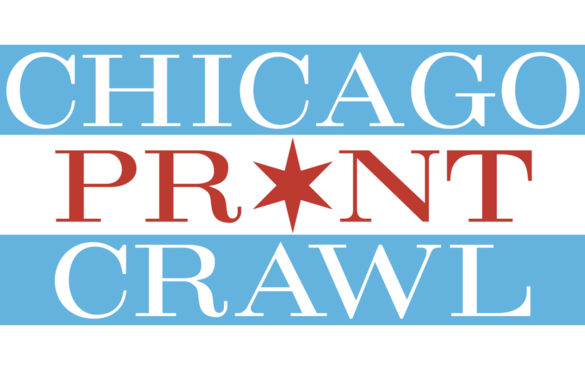
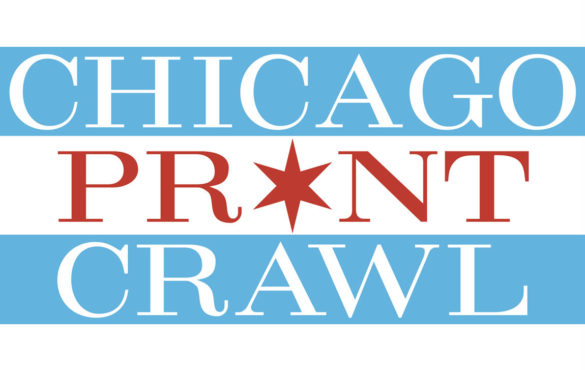
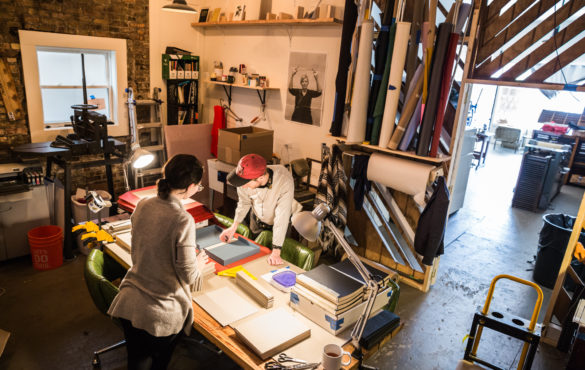
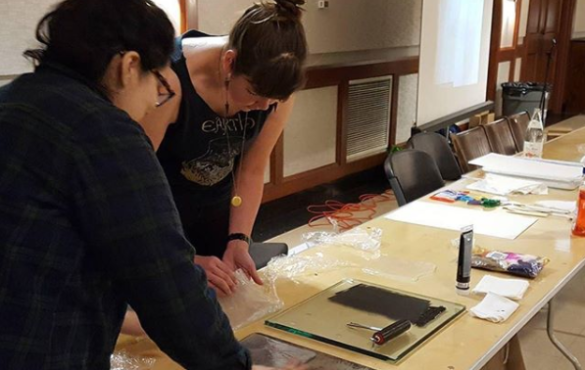
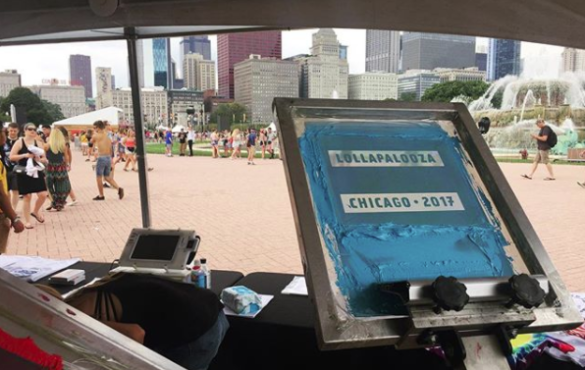
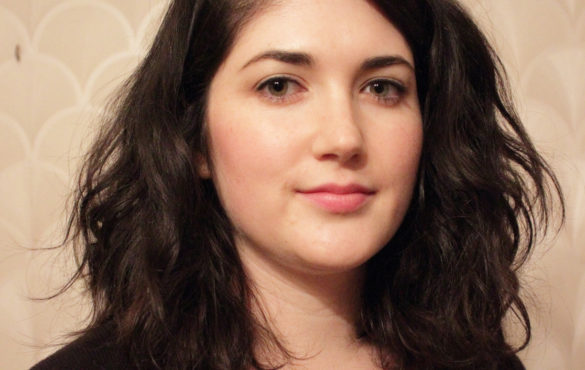
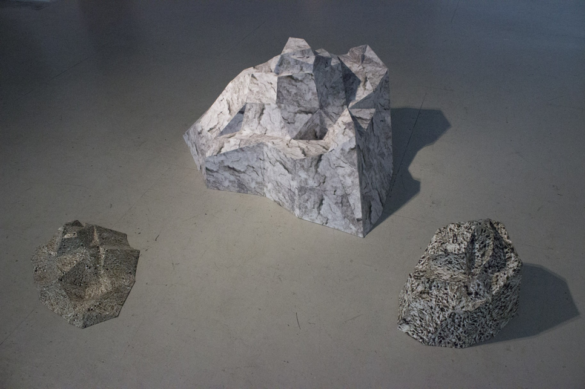
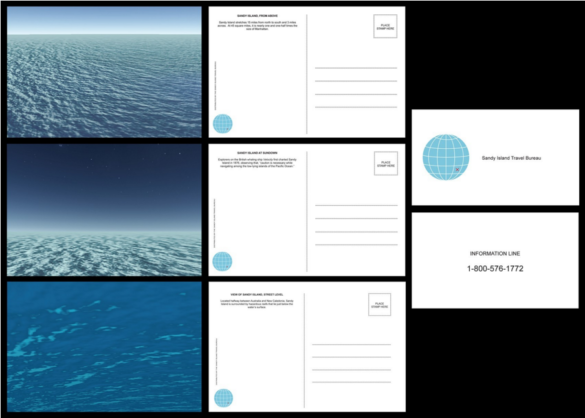
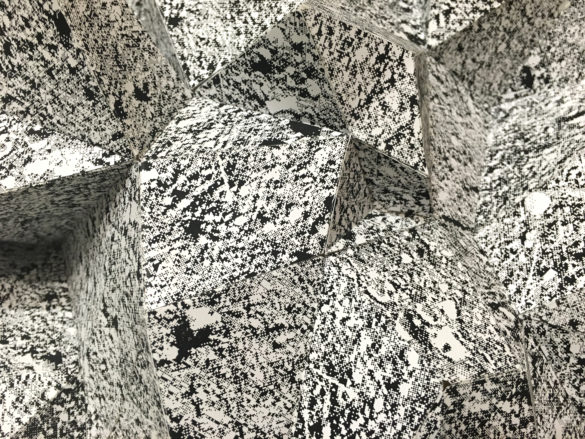
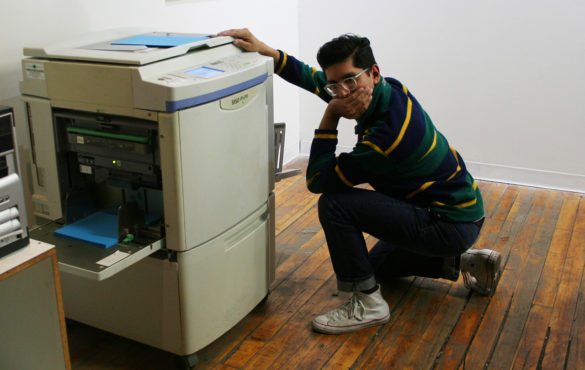
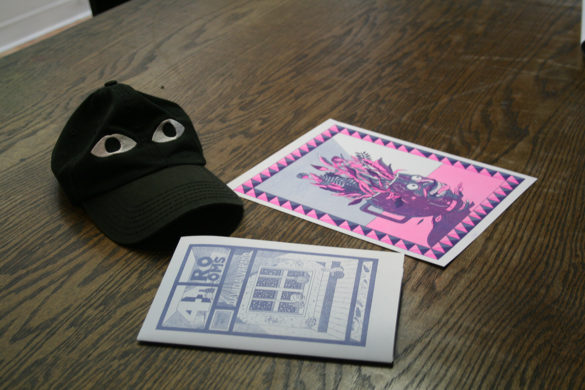
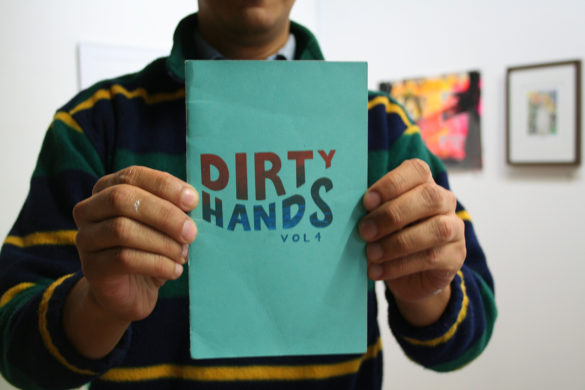
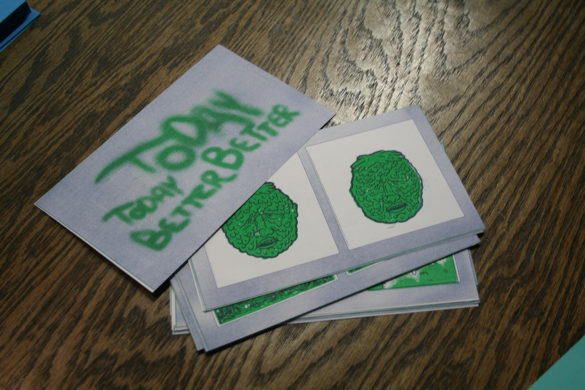
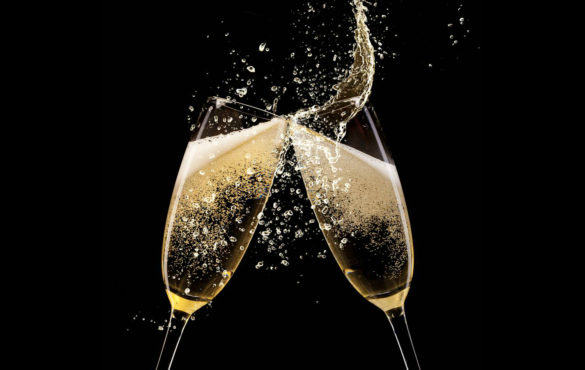
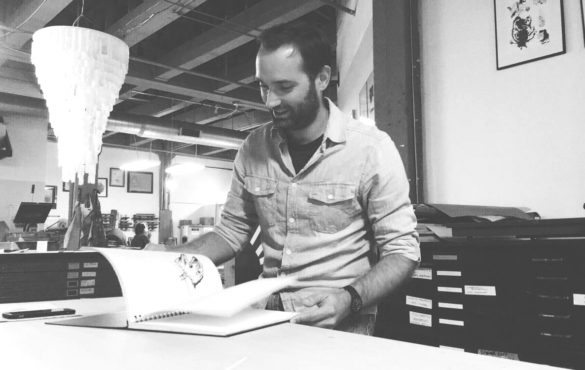
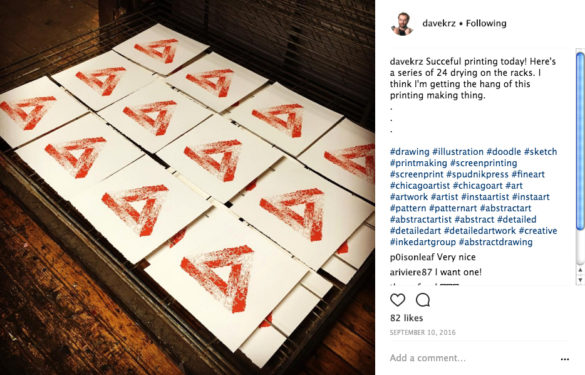
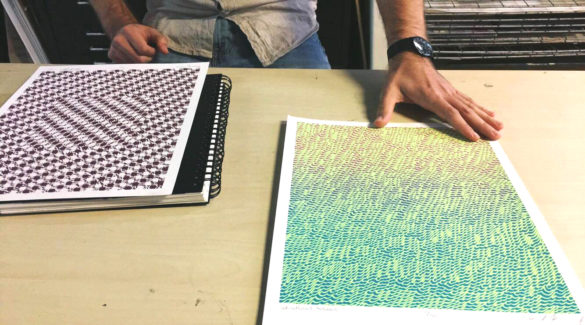
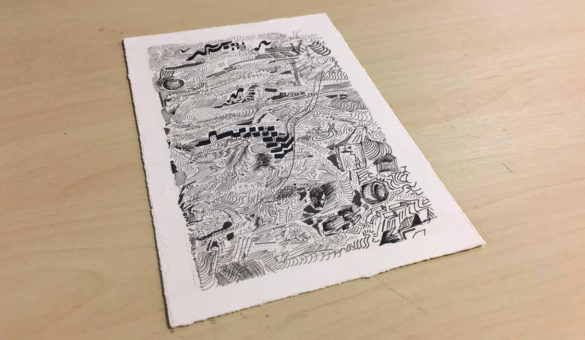
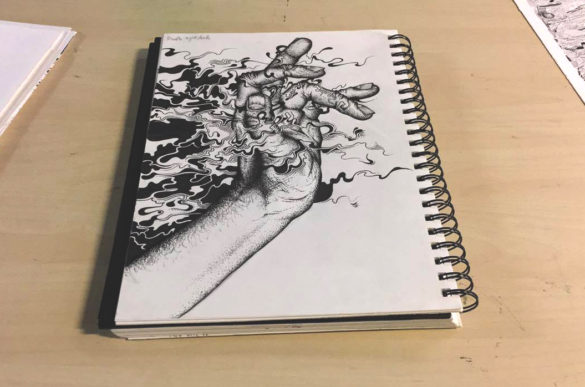
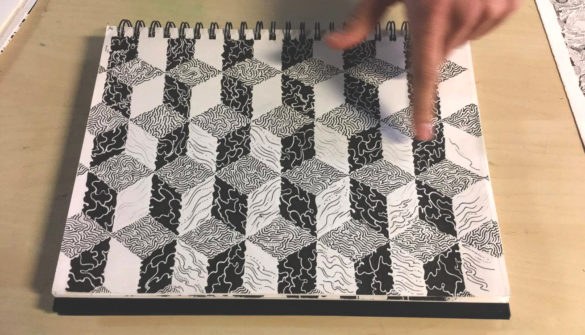
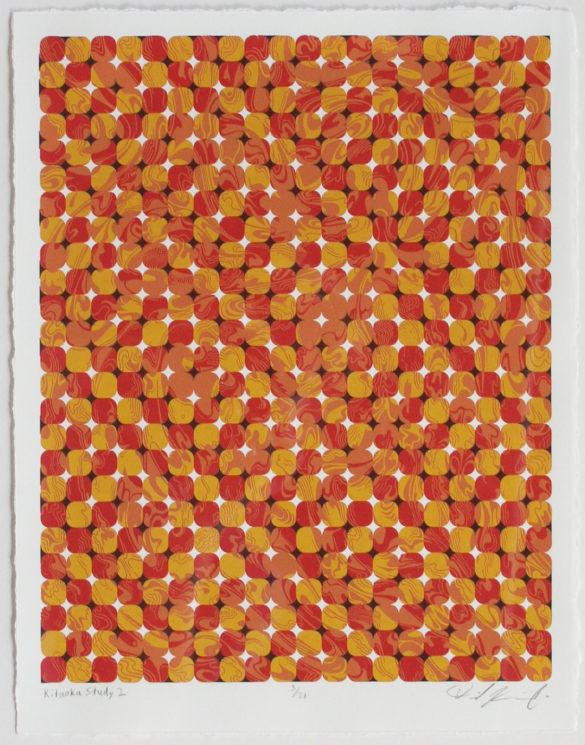
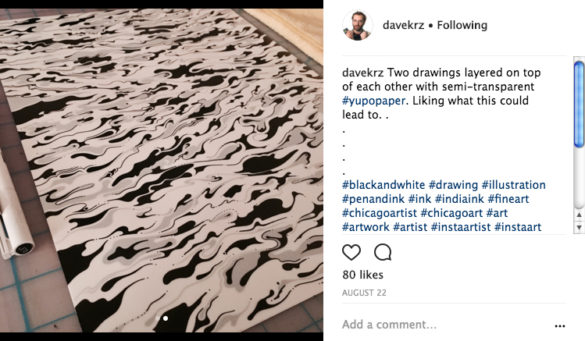
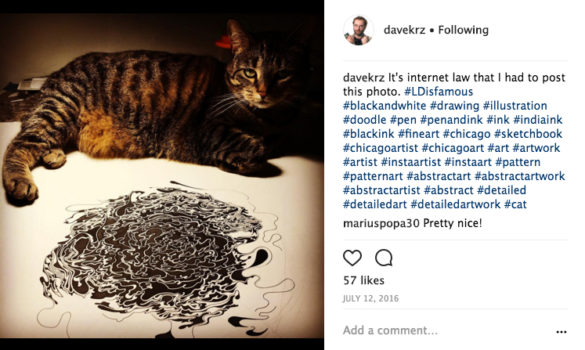
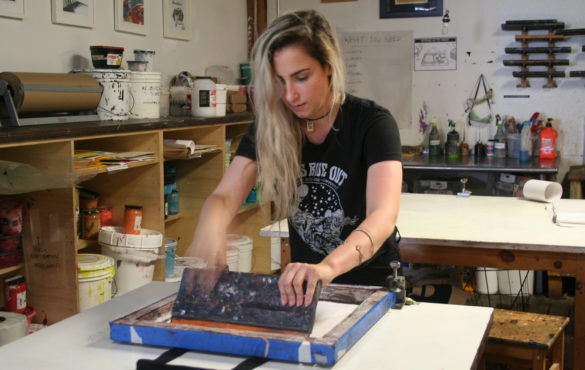
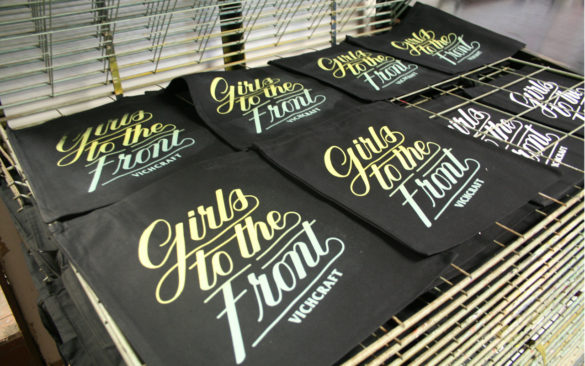
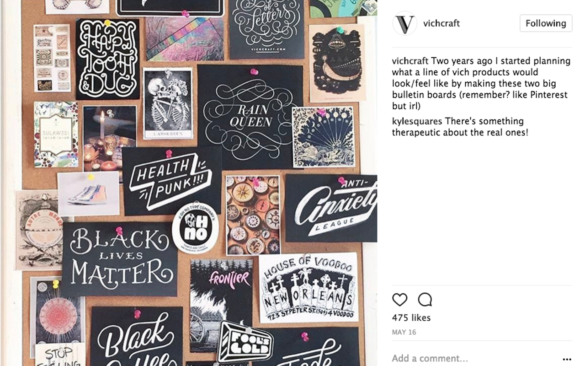
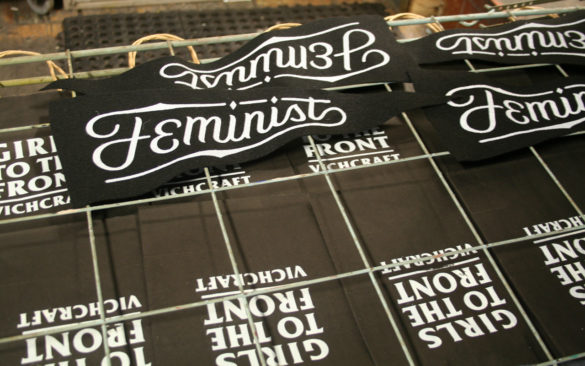
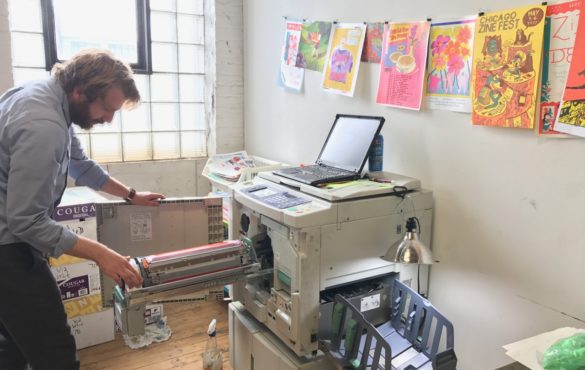



 The Meaning of Life by Anja Wicki
The Meaning of Life by Anja Wicki